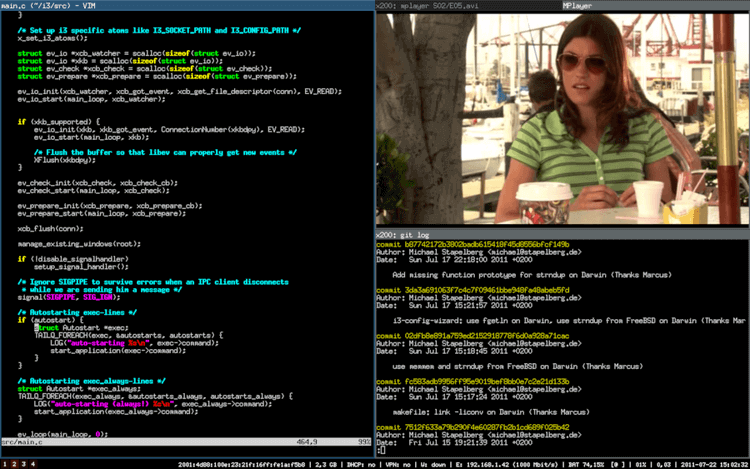In today’s globalized economy, the shipment of oversized goods—think industrial machinery, construction materials, or even giant sculptures—has become increasingly crucial. Shipping these items efficiently and safely presents unique challenges, including logistics, cost, and risk management. However, the evolution of technology has started to revolutionize the entire process, making it easier, more efficient, and far less costly. Here we delve into the latest technological innovations transforming the shipment of oversized goods, with a focus on automation, data analytics, IoT, and other breakthrough solutions.
Oversized goods, often referred to as “out-of-gauge” cargo, are shipments that exceed the standard size or weight limits for containers and transport vehicles. Moving these massive items across long distances entails multiple complexities, from securing the cargo to planning specialized routes and ensuring regulatory compliance. Transporting oversized items was traditionally seen as a logistical nightmare, requiring intense coordination between different stakeholders, from logistics providers to regulatory authorities. For specialized needs, services like hot shot trucking offer faster delivery options for oversized goods. Click to know more https://www.shiply.com/us/hot-shot-trucking
2. Automation: Streamlining the Shipment Process
Contents
- 1 2. Automation: Streamlining the Shipment Process
- 2 3. Data Analytics: Enhancing Decision-Making
- 3 4. IoT and Sensors: Tracking and Monitoring in Real-Time
- 4 5. Blockchain: Ensuring Secure and Transparent Transactions
- 5 6. Drones and Autonomous Vehicles: The Future of Last-Mile Delivery
- 6 7. Digital Twins: Simulating Shipments Before They Begin
- 7 8. Cloud Computing: Enhancing Collaboration and Accessibility
- 8 9. AI-Powered Predictive Maintenance: Keeping Equipment in Top Shape
- 9 10. Future Trends: What Lies Ahead for Oversized Shipments
- 10 Conclusion:
Automation in the shipping industry, especially in oversized cargo, is a game-changer. Through automation, companies can now streamline loading, unloading, tracking, and delivery processes, significantly reducing human error and manual labor. Automated cranes, self-driving forklifts, and robotic arms allow for safer handling of heavy or bulky items.
Additionally, automation enables better coordination within warehouses and at ports. Sensors and automated sorting systems can detect the dimensions of goods, categorizing them accurately for proper transportation. This precision ensures safer packaging, minimizing the chances of accidents due to human error and creating a more efficient loading and unloading process.
3. Data Analytics: Enhancing Decision-Making

Data analytics has become a vital tool in optimizing the shipment of oversized goods. Shipping companies now collect and analyze vast amounts of data to make informed decisions. For example, predictive analytics can help logistics providers forecast potential delays, price fluctuations, or demand surges, allowing them to plan accordingly.
Moreover, data analytics enables route optimization by analyzing past shipping data to determine the best transportation routes, thus minimizing transit times and fuel costs. It also allows for real-time cost management by providing insights into where resources are being overused, allowing logistics companies to adjust for efficiency and cost reduction.
4. IoT and Sensors: Tracking and Monitoring in Real-Time
The Internet of Things (IoT) and sensor technology are essential for tracking and monitoring oversized shipments in real time. IoT devices embedded in cargo allow companies to monitor their goods continuously, providing information on location, temperature, humidity, and even vibrations. This is particularly crucial for oversized cargo, which is more vulnerable to damage during transit.
For instance, sensors can alert the logistics team if an item has shifted or experienced an impact that could result in damage. Real-time tracking also provides visibility for customers, allowing them to monitor the progress of their shipment from departure to arrival. IoT-powered tracking improves transparency, builds customer trust, and ultimately enhances customer satisfaction by providing a seamless, well-monitored service.
5. Blockchain: Ensuring Secure and Transparent Transactions
Blockchain technology is gradually gaining traction in the logistics industry, and its impact on the shipment of oversized goods is notable. Blockchain’s decentralized ledger system ensures secure, transparent, and tamper-proof transactions, which are essential for oversized goods that often require detailed paperwork and compliance checks.
By implementing blockchain, logistics companies can simplify documentation processes, reduce errors, and streamline customs clearance. Moreover, blockchain helps build trust among all stakeholders, from manufacturers to end consumers, by creating an immutable record of every transaction. This not only facilitates smoother shipments but also minimizes disputes and the need for intermediaries, further lowering costs and delays.
6. Drones and Autonomous Vehicles: The Future of Last-Mile Delivery
Drones and autonomous vehicles, while primarily associated with small packages, are beginning to show promise in the oversized goods sector as well. Although large drones can’t carry massive items, they can be used for surveying routes, assisting in inspections, and providing valuable data on remote areas where oversized goods need to pass through.
Autonomous vehicles, on the other hand, are more practical for oversized shipments. Self-driving trucks and barges are being developed to carry heavy cargo, especially in controlled environments such as ports or warehouse zones. This technology reduces dependency on human drivers, cutting down on labor costs and mitigating the risks associated with driver fatigue.
7. Digital Twins: Simulating Shipments Before They Begin
A revolutionary advancement in oversized goods shipment is the concept of “digital twins”—digital replicas of physical assets that allow companies to simulate the shipment process in a virtual environment before it happens. Digital twins enable shippers to test routes, packing configurations, and handling procedures without moving a single piece of cargo.
By creating a digital twin of an oversized item, logistics teams can analyze various scenarios, assess potential risks, and optimize procedures for safe handling and transportation. Digital twins also facilitate predictive maintenance by identifying potential equipment failures before they occur, ensuring smoother and safer transportation.
8. Cloud Computing: Enhancing Collaboration and Accessibility

Cloud computing has proven invaluable for facilitating collaboration among various stakeholders in oversized goods shipments. Oversized goods shipments typically involve multiple parties: manufacturers, carriers, port authorities, customs, and end recipients. Cloud platforms allow all involved parties to access critical information, update documents in real-time, and share data seamlessly.
This instant accessibility enhances decision-making and coordination, reduces communication delays, and makes it easier to address any issues as they arise. Additionally, cloud computing enables logistics companies to centralize their data storage and management, making it easier to analyze shipment data for ongoing optimization.
9. AI-Powered Predictive Maintenance: Keeping Equipment in Top Shape
Transporting oversized goods requires specialized equipment, and any breakdown can result in costly delays. AI-powered predictive maintenance is becoming a standard in logistics, especially when dealing with heavy-duty machinery used to transport oversized goods. AI algorithms analyze historical data from machinery and predict potential failures before they happen, allowing for timely maintenance.
Predictive maintenance minimizes downtime and extends the lifespan of equipment, directly reducing the costs associated with frequent repairs and replacements. For companies handling oversized goods, this translates into smoother operations, fewer unexpected delays, and ultimately higher customer satisfaction.
10. Future Trends: What Lies Ahead for Oversized Shipments
As technology continues to advance, the future of oversized shipments looks promising. The integration of artificial intelligence, machine learning, and robotics will further streamline the process. Future advancements may include more sophisticated autonomous transportation systems, even for long-haul routes. Also, as blockchain becomes more widely adopted, it will likely lead to a fully transparent, real-time supply chain with minimal paperwork and error-prone documentation.
In addition, 5G technology is expected to enhance the capabilities of IoT and remote monitoring devices, providing even faster and more reliable data transmission. This will allow for improved real-time monitoring, making oversized shipments even safer and more efficient. As these technologies mature, they are expected to become more accessible and cost-effective, potentially lowering the entry barrier for smaller companies to engage in the oversized shipping industry.
Conclusion:
The shipment of oversized goods is undergoing a transformation driven by groundbreaking technological innovations. Automation, data analytics, IoT, blockchain, and AI-powered tools are reshaping how oversized items are moved across the globe. These technologies offer increased safety, enhanced efficiency, and reduced costs, solving many of the longstanding challenges of oversized shipments. The industry stands on the brink of a new era, where the shipment of massive items can be executed with unprecedented ease and reliability, ultimately supporting global trade and economic growth.





